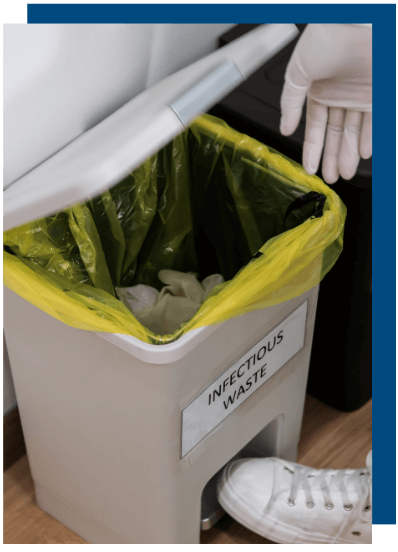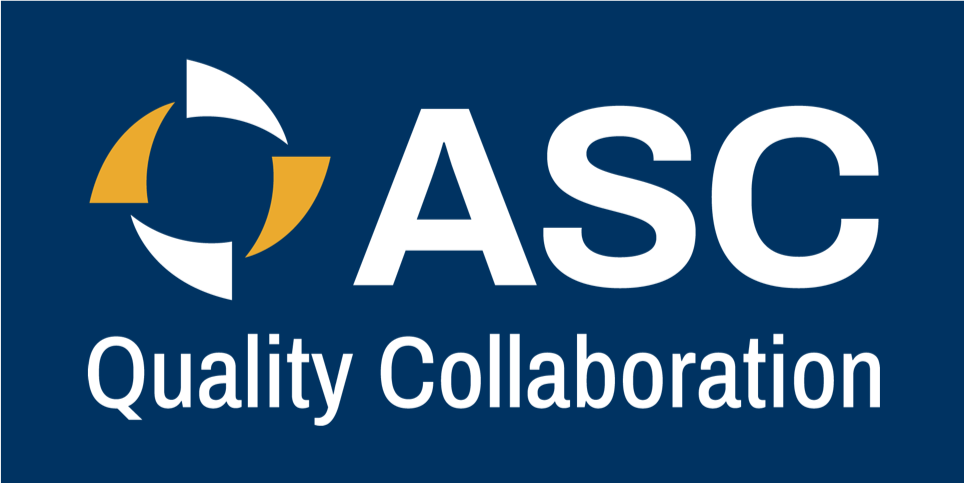Environmental Infection Prevention Toolkit
The resources in this toolkit may only be used for internal improvement and education efforts. They may not be used for commercial purposes.

Contaminated environments increase the risk of transmission of healthcare associated infections. Appropriate environmental infection prevention practices are important to maintaining a safe environment of care for both patients and providers.
The ASC Quality Collaboration has assembled a variety of resources and information that may be used to supplement your current processes to enhance existing environmental infection prevention practices.
The Environmental Infection Prevention Toolkit contains both essential resources and a broader array of materials, including:
Assessment Tools
- Environmental Infection Control — What CMS Surveyors Are Looking For: Perform a self-assessment using the same tool CMS surveyors use when evaluating environmental infection control practices in the ASC setting
- Environmental Cleaning Audit Template: This sample audit template may be used to assess environmental cleaning. The template should be used to address different care areas within the center and should be customized to reflect the unique environment of each facility.
Implementation Aids
- Blood or Other Body Fluid Spills Policy and Procedure Template: This sample policy and procedure for managing spills of blood and other body fluids is based on the Centers for Disease Control and Prevention (CDC) guidelines. It should be adapted as needed for use in each facility.
- PSHSA Cleaning and Disinfection of Environmental Surfaces: This article from the Ontario Safety Association for Community & Healthcare (OSACH, which is now a part of the Public Services Health & Safety Association) provides information on evaluating and selecting environmental disinfectants for use in healthcare settings.
- Environmental Cleaning Policy & Procedure Resource: This resource from the Winnepeg Regional Health Authority (WRHA) can be used as the basis for a center’s individual development of a policy and procedure on this topic.
- Environmental Cleaning Best Practices: This resource from the Centers of Disease Control describes best practices for environmental cleaning that can be used as a reference for a center’s individual development of a policy and procedure on this topic.
- Selected EPA Registered Disinfectants (EPA): The links below lead to lists from the Environmental Protection Agency (EPA) itemizing products that are registered as effective against various infectious pathogens.
-
- List B: EPA Registered Tuberculocidal Products Effective Against Mycobacterium tuberculosis
- List C: EPA’s Registered Antimicrobial Products Effective Against Human HIV-1 Virus
- List D: EPA’s Registered Antimicrobial Products Effective Against Human HIV-1 and Hepatitis B Virus
- List E: EPA’s Registered Antimicrobial Products Effective Against Mycobacterium tuberculosis Human HIV-1 and Hepatitis B Virus
- List F: EPA’s Registered Antimicrobial Products Effective Against Hepatitis C Virus
- List G: EPA’s Registered Antimicrobial Products Effective Against Norovirus
- List H: EPA’s Registered Antimicrobial Products Effective Against Methicillin Resistant Staphylococcus aureus (MRSA) and Vancomycin Resistant Enterococcus faecalis or faecium (VRE)
- List K: EPA’s Registered Antimicrobial Products Effective Against Clostridium difficile spores
- List N: EPA’s list of disinfectants for Coronavirus (COVID-19)
-
Training Materials
- Blood Spill Clean Up Video (Yale University): This 3 ½ minute training video from Yale University demonstrates the procedure for clean up of a moderate size blood spill. Though set in the laboratory, many of the processes demonstrated here are applicable to the surgery center setting. Please note that for spills outside the laboratory, the room does not need to be aerated for 10 minutes.
- CDC Guidelines for Environmental Infection Control in Healthcare Facilities – This document provides recommendations of CDC and the Healthcare Infection Control Practices Advisory Committee (HICPAC).
- Cleaning and Disinfection of Environmental Services – Oregon Safety Association for Community and Healthcare – This document provides information about the types of disinfectants available for use and how they can augment facility cleaning and disinfection strategies.
- Oregon Patient Safety Authority videos based upon AORN guidelines:

Monitoring Tools
- Environmental Cleaning Audit Template: This sample audit template may be used to assess environmental cleaning. It should be customized to reflect the unique environment of each facility.
Workplace Reminders
- Environmental Cleaning Guide Template: This template may be used to create a facility-specific guide to environmental cleaning agents, methods, and frequency.
Guidelines from Leading Authorities
- CDC Surface Disinfection: This excerpt from the Centers for Disease Control and Prevention’s (CDC) more comprehensive Guideline for Disinfection and Sterilization in Healthcare Facilities (presented below) provides guidance on surface disinfection.
- CDC Guidelines for Environmental Infection Control in Health Care Facilities: This document provides recommendations of CDC and the Healthcare Infection Control Practices Advisory Committee (HICPAC).
Resources Cited
The materials presented here include publicly available resources from the following organizations:
- Centers for Disease Control and Prevention (CDC)
- Environmental Protection Agency (EPA)
- Public Services Health & Safety Association (PSHSA)
- Provincial Infectious Disease Advisory Committee (PIDAC)
- Yale University
- Winnepeg Regional Health Authority (WRHA)
Comments and other feedback may be directed to Nina Goins, Executive Director, ASC Quality Collaboration.
Contact us today to learn more about how we can support you.
ASC Quality Collaboration
The only organization exclusively dedicated to advancing patient safety and quality of care delivery in ambulatory surgery centers.
